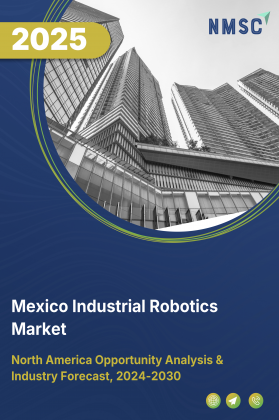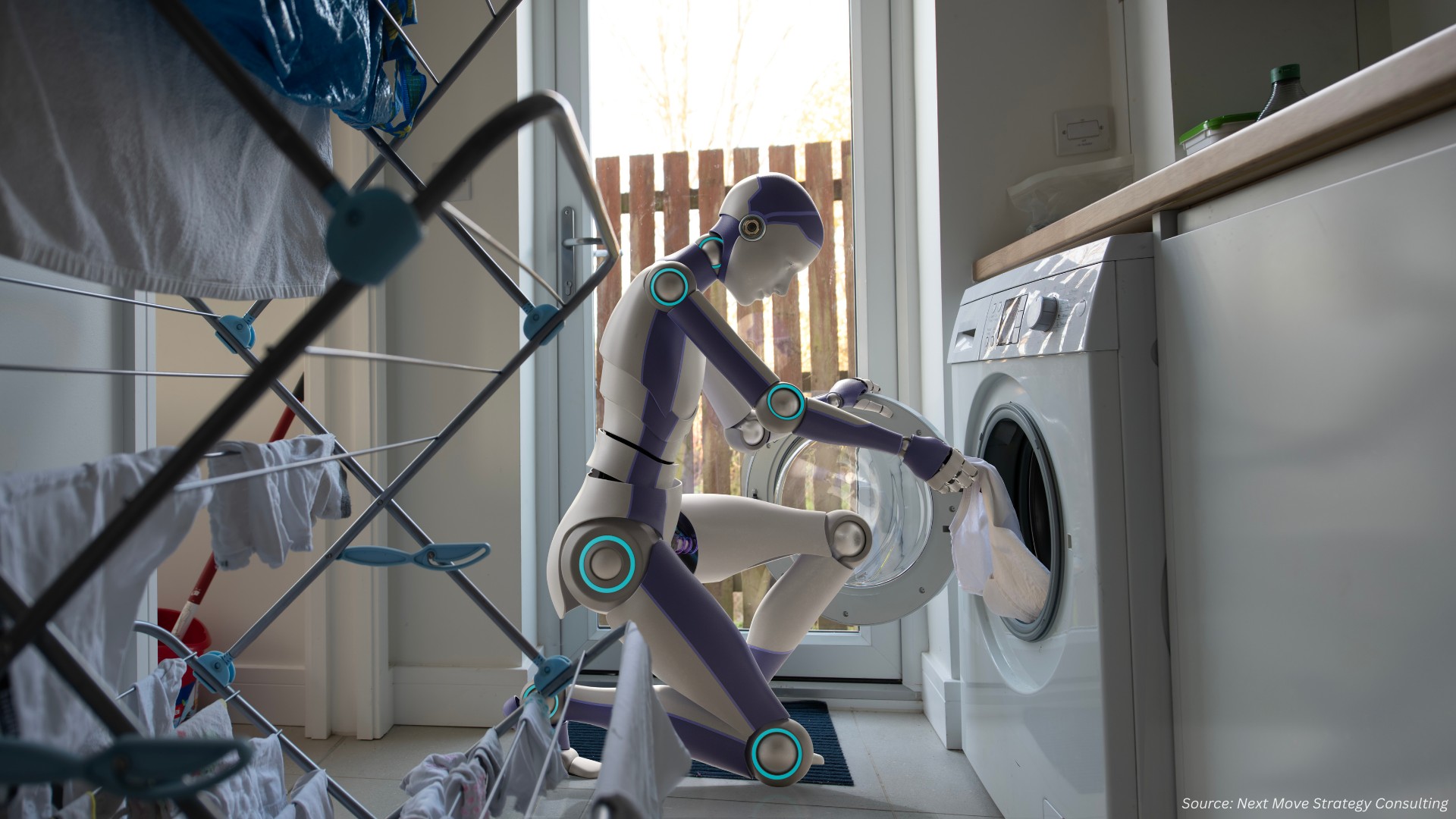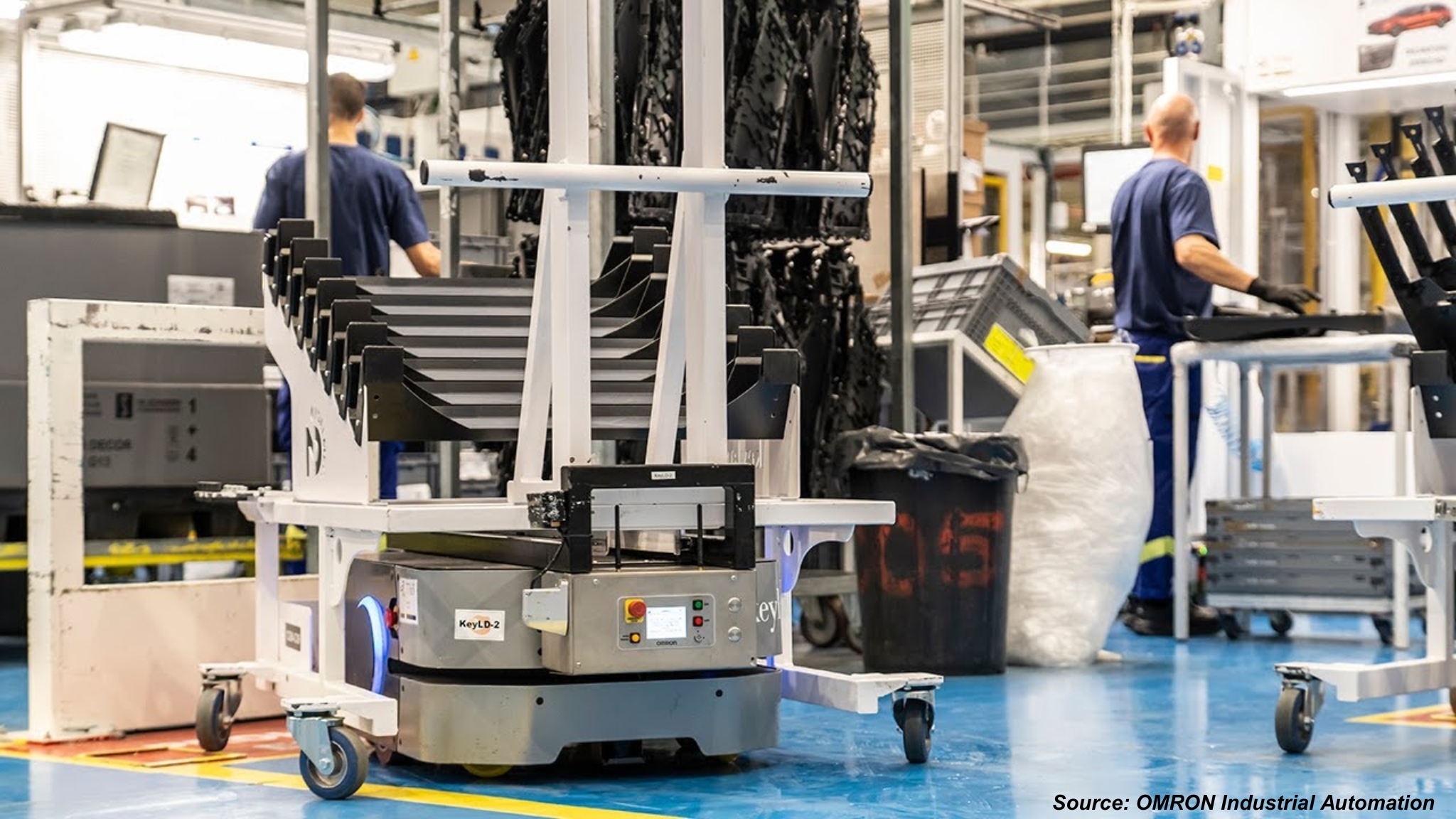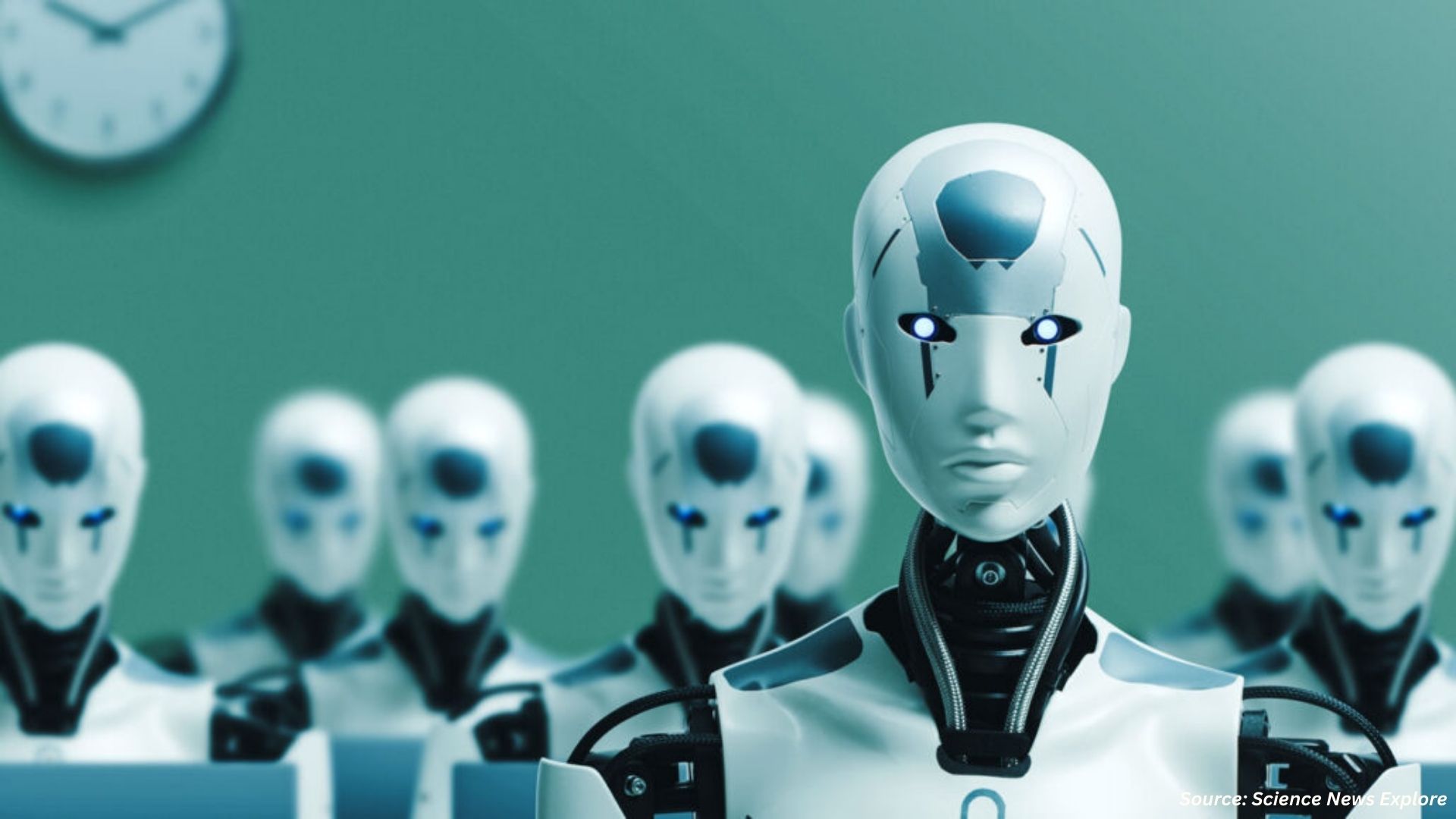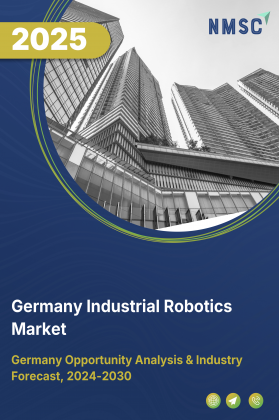
Germany Industrial Robotics Market by Type (Articulated Robots, SCARA Robots, and Others), by Offering Hardware, Software, and Services), by Payload Capacity (≤ 100 KG, 101-200 KG, 201-500 KG and Others), by Mobility (Stationary, and Mobile Robots), by Mounting Type (Floor mounted, Wall-mounted, and Others), by Application (Material Handling, Assembling & Disassembling, and Others), by Industry Vertical (Automotive, and Others) – Opportunity Analysis and Industry Forecast, 2025–2030
Industry: Semiconductor & Electronics | Publish Date: 24-Nov-2025 | No of Pages: 237 | No. of Tables: 192 | No. of Figures: 137 | Format: PDF | Report Code : SE3709
Industry Outlook
The Germany Industrial Robotics Market size was valued at USD 928.6 million in 2024 and is expected to reach USD 1084.3 million by 2025. Looking ahead, the industry is projected to expand significantly, reaching USD 1841 million by 2030, registering a CAGR of 11.2% from 2025 to 2030. In terms of volume, the market recorded 11 thousand units in 2024, with forecasts indicating growth to 14 thousand units by 2025 and further to 28 thousand units by 2030, reflecting a CAGR of 15.3% over the same period.
The Germany industrial robotics market demand is experiencing strong growth, driven by the expansion of the manufacturing sector, increasing automation initiatives, and the shift towards smart factories. Key growth factors include vendor innovation from companies like ABB, Fanuc, KUKA, and Yaskawa, which are developing advanced, flexible, and AI- or IoT-enabled robotic solutions. These technologies enhance operational efficiency, process optimization, and production flexibility. IoT integration further enables real-time monitoring, predictive maintenance, and data-driven manufacturing, creating new opportunities for productivity improvements. However, challenges such as high initial costs, integration with legacy systems, and the need for skilled personnel, particularly in SMEs, can limit adoption. Overall, factory automation systems is set to play a transformative role in strengthening Germany’s manufacturing competitiveness.
Germany’s Robust Manufacturing Base Propels the Industry Growth
Germany’s position as Europe’s industrial powerhouse continues to drive robust demand for industrial robotics. With a well-established base in automotive, electronics, machinery, and chemical manufacturing, the country has long been a frontrunner in adopting automation technologies. Manufacturers are increasingly investing in robotics to enhance precision, improve productivity, and maintain their global competitive edge. This strong foundation of advanced manufacturing, coupled with a culture of engineering excellence and innovation, is accelerating overall market growth and reinforcing Germany’s leadership in industrial automation.
Integration of Industry 4.0 and Digitalization is Shaping Germany Industrial Robotics Market Trends
As the birthplace of the Industry 4.0 concept, Germany remains at the forefront of integrating robotics with digital technologies such as AI, IoT, and machine vision. The growing emphasis on smart factories and connected production environments is driving a new wave of automation across diverse industrial sectors. Robotics is playing a key role in enabling predictive maintenance, real-time analytics, and flexible production systems that respond swiftly to changing market demands. Supported by strong government initiatives and R&D investments, these technological advancements are setting new market trends and further enhancing Germany’s reputation as a global innovation hub.
High Implementation Costs and Integration Complexity is Limiting the Germany Industrial Robotics Market Expansion
Despite its advanced industrial infrastructure, the German robotics market faces challenges related to the high cost of implementation and the complexity of system integration. Smaller manufacturers often struggle to justify large-scale automation investments due to tight budgets, long payback periods, and the need for customized solutions. Additionally, integrating robotics with legacy equipment and ensuring interoperability within existing production lines can be technically demanding. These factors slow market expansion, particularly among mid-sized and traditional enterprises that operate with limited resources.
Growing Adoption for Collaborative Robots and Sustainable Automation Creates Future Opportunity
An emerging opportunity in Germany industrial robotics market lies in the rising adoption of collaborative robots (cobots) and sustainable automation practices. Cobots, which can safely work alongside human operators, are being embraced by small and medium-sized manufacturers seeking greater flexibility and cost efficiency. Moreover, the increasing focus on sustainability and energy-efficient production systems is encouraging companies to deploy next-generation robotic technologies designed to reduce waste and optimize energy use. Together, these trends are fueling market demand and positioning Germany for continued leadership in the next phase of intelligent, sustainable manufacturing.
Competitive Landscape
The Germany industrial robotics industry is highly competitive, dominated by leading players such as ABB Ltd., Fanuc Corporation, Yaskawa Electric Corporation, Mitsubishi Electric Corporation, KUKA AG, Kawasaki Heavy Industries, Nachi-Fujikoshi Corp., Denso Wave Inc., Panasonic Corporation, Yamaha Motor Co., Ltd., Omron Corporation, Seiko Epson Corporation, Staubli International AG, Universal Robots, and Doosan Robotics Inc. These companies are driving innovation by introducing advanced AI and IoT enabled robotic solutions, including collaborative robots and autonomous mobile robots. Their offerings are accelerating automation adoption across multiple German industries, from automotive and electronics to logistics and general manufacturing, enhancing productivity, operational efficiency, and competitiveness across the country’s manufacturing landscape
Germany Industrial Robotics Market Key Segments
By Type
-
Articulated Robots
-
SCARA Robots
-
Cylindrical Robots
-
Cartesian/Linear Robots
-
Parallel Robots
-
Collaborative Robots
-
Autonomous Mobile Robots (AMRs)
-
Automated Guided Vehicles (AGVs)
-
Other Robots
By Offering
-
Hardware
-
Software
-
Robot Control Software
-
Vision & Perception Software
-
Other Software
-
-
Services
By Payload Capacity
-
≤ 100 KG
-
101-200 KG
-
201-500 KG
-
501-1000 KG
-
1001-2000 KG
-
2001-5000KG
-
More than 5000 KG
By Mobility
-
Stationary Robots
-
Mobile Robots
By Mounting Type
-
Floor-mounted
-
Wall-mounted
-
Ceiling-mounted
-
Rail-mounted
By Application
-
Material Handling
-
Assembling & Disassembling
-
Processing
-
Cleanroom
-
Dispensing
-
Welding and Soldering
-
Pick and Place
-
Others
By Industry Vertical
-
Automotive
-
Semiconductor & Electronics
-
Plastic and Chemical Products
-
Metal and Machinery
-
Logistics
-
Food & Beverages
-
Healthcare & Pharmaceutical
-
Others
Key Players
-
ABB Ltd.
-
Fanuc Corporation
-
Yaskawa Electric Corporation
-
Mitsubishi Electric Corporation
-
KUKA AG
-
Kawasaki Heavy Industries
-
Nachi-Fujikoshi Corp.
-
Denso Wave Inc
-
Panasonic Corporation
-
Yamaha Motor Co., Ltd.
-
Omron Corporation
-
Seiko Epson Corporation
-
Staubli International AG
-
Universal Robots
-
Doosan Robotics Inc.
Report Scope and Segmentation
|
Parameters |
Details |
|
Market Size in 2025 |
USD 1084.3 Million |
|
Revenue Forecast in 2030 |
USD 1841 Million |
|
Growth Rate |
CAGR of 11.2% from 2025 to 2030 |
|
Market Volume in 2025 |
14 thousand units |
|
Volume Forecast in 2030 |
28 thousand units |
|
Growth Rate |
CAGR of 15.3% from 2025 to 2030 |
|
Analysis Period |
2024–2030 |
|
Base Year Considered |
2024 |
|
Forecast Period |
2025–2030 |
|
Market Size Estimation |
Million (USD) |
|
Growth Factors |
|
|
Companies Profiled |
15 |
|
Market Share |
Available for 10 companies |
|
Customization Scope |
Free customization (equivalent up to 80 working hours of analysts) after purchase. Addition or alteration to country, regional, and segment scope. |
|
Pricing and Purchase Options |
Avail customized purchase options to meet your exact research needs. |

















 Speak to Our Analyst
Speak to Our Analyst





